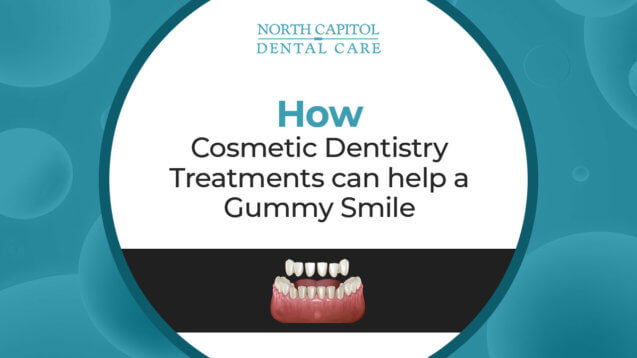How can Cosmetic Dentistry Treatments Help a Gummy Smile?
Most people know that cosmetic dentistry may be used to beautify teeth, but few are aware that some operations can also alter the appearance of gums. Gummy grins can cause people to feel uneasy and self-conscious, and nobody wants to avoid smiling. As a result, increasing numbers of people use cosmetic dentistry in San Jose to enhance their smiles.
What Is A Gummy Smile?
The term “gummy grin” is unfamiliar to many people and is a very uncommon health concern and not a well-known dental problem. When someone is unhappy with the proportion of their gums to teeth in their grin, it shows in their gummy smile. It completely depends on your viewpoint.
Diagnosis
A diagnosis is cosmetic dentistry’s first step to treating a gummy smile. Gummy grins can result from several factors. Dentists’ most frequent problems are gum overgrowth, upper lip size and mobility, overbites, and tooth size.
There isn’t just one straightforward treatment for gummy grins because several elements contribute to the condition. X-rays are taken, gum-to-tooth ratios are calculated, lip movement is observed, and the dentist examines even the size and ratio of the patient’s jawline. The right remedial technique can be suggested for a patient’s requirements once the dentist ascertains the cause of their gummy grin.
Fixes For A Gummy Smile
Gum Lifts
A gum lift is one of the more popular procedures. Gingivectomy, commonly known as gum lift surgery, has historically been used to cure gum disease. Still, it has gained popularity in aesthetic dentistry to balance out the gum-to-tooth ratio. This is frequently used in conjunction with veneers and crown extensions to lengthen teeth and lessen the appearance of gums for a brighter, less gummy smile.
Botox
Botox is well-known for its aesthetic skin advantages, and it has gradually entered the field of cosmetic dentistry. Botox is injected into the lower lip to correct and relax any tightness. Less gum tissue is visible when a patient grins because their muscles are more relaxed. This technique works effectively when lip muscles are hyperactive and generate gummy grins.
The quickest and least intrusive way to treat gummy grins is with this procedure. However, it does have the disadvantage of not being a long-term fix, and the operation must be repeated every two to three months for patients. Additionally, those who are afraid of needles should certainly search for alternatives.
Laser Treatment
Laser contouring is an alternative to more invasive surgical procedures. Gums can be reshaped with cosmetic dentistry using laser precision, which takes less shaping than a gingivectomy. This technique works well when the gums cover the teeth and reach too far down. Because the laser singes the gums during the process, this treatment has several benefits, including quicker recovery and a lower risk of infection.
Surgery
Patients with high upper lips may benefit from lip augmentation. A surgical procedure is known as a “gummy tuck” involves the removal of a strip of tissue and sewing it into a lower position so that the upper lip extends farther over the gum line.
Jaw surgery is yet another procedure. A patient’s jaw will be reshaped and positioned by the surgeon and then fixed with plates and screws. This procedure necessitates a hospital stay and a liquid diet while the jaw heals while being wired shut. Although quite intrusive, the effects endure a lifetime.
To Sum Up
Many procedures in cosmetic dentistry are available to correct a gummy grin, but a precise diagnosis of the problem is essential. Given that many of these treatments are quite invasive and not necessary for maintaining excellent dental health and cleanliness, it is crucial to take the time to explore your options carefully. Instead of addressing health issues, they are made to address cosmetic issues. The patient must carefully consider the risks associated with the more intensive treatments against the aesthetic impact.


